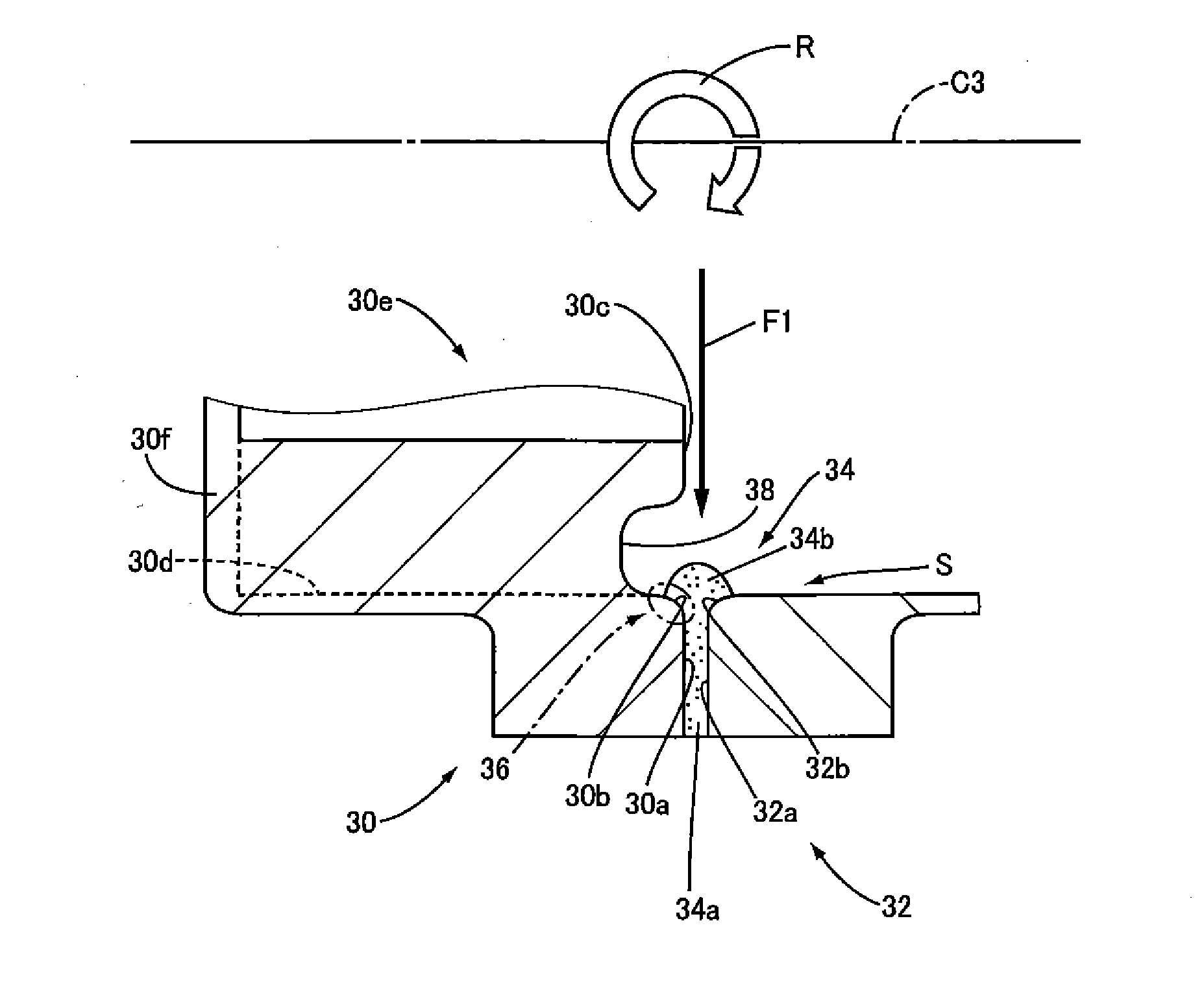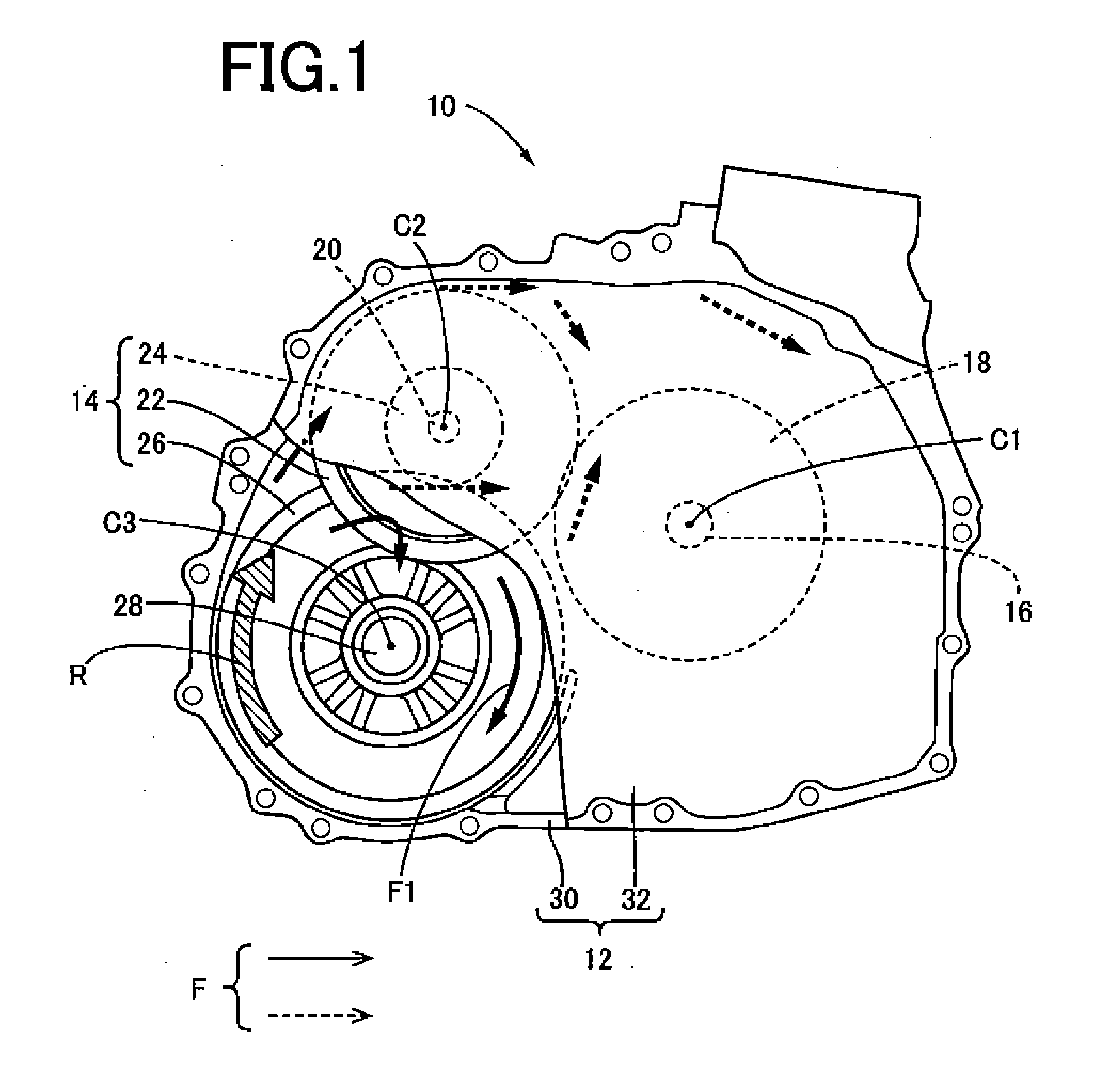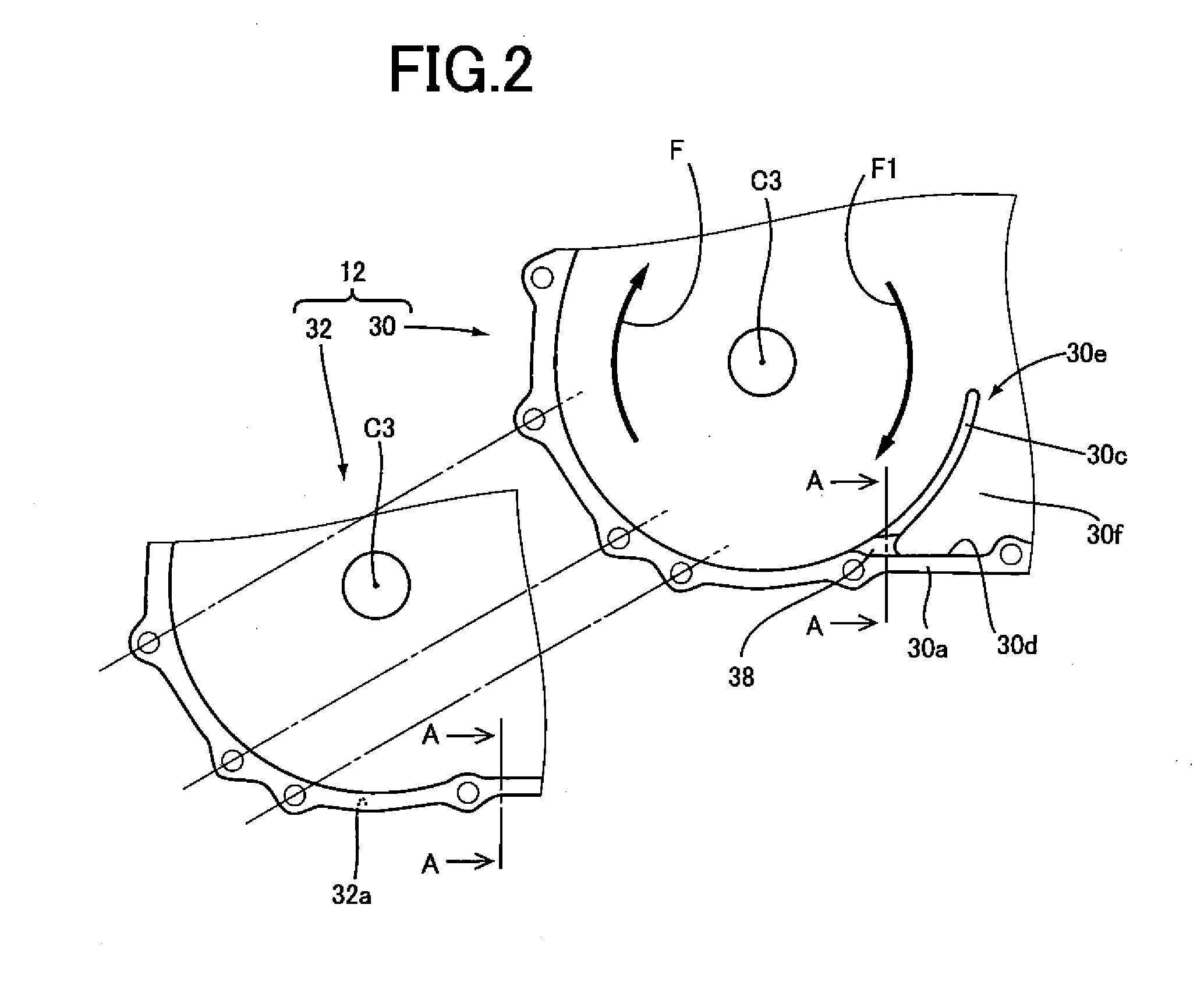Sealing structure using a liquid gasket
a sealing structure and liquid gasket technology, applied in the direction of gear seals, gear lubrication/cooling, engine seals, etc., can solve the problems of reducing the sealing performance, and requiring more time for curing, so as to achieve sufficient sealing performance, secure sufficient sealing performance, and save space
- Summary
- Abstract
- Description
- Claims
- Application Information
AI Technical Summary
Benefits of technology
Problems solved by technology
Method used
Image
Examples
first embodiment
[0032]A power transmitting device 10 for vehicles comprises a non-illustrated automatic transmission, a reduction mechanism portion 14, a non-illustrated differential mechanism portion, and the like that are installed in a transaxle case 12 (hereinafter referred to as a case 12) that serves as a nonrotational element attached to the vehicle body, for example. The power transmitting device 10 for vehicles is a transaxle that is suitable for use in FF vehicles, in which the device is mounted in the left-right direction of the vehicle (transversely mounted). The automatic transmission is installed, for example, on a first shaft 16 having a first axis C1, which serves as a main shaft that is connected to a non-illustrated drive power source in a power transmissible manner. The automatic transmission changes the speed of the rotation of the first shaft 16, and outputs it from an output gear 18 installed on the first shaft 16. The output gear 18 functions as a counter drive gear that mesh...
second embodiment
[0042]In the above embodiment, a slot 38 was formed at the portion where the rib 30e is formed in the case body 30. The slot 38 prevents the mating surface 30a and the protruding surface 30c of the case body 30 from forming one continuous surface, so that the interface between the gasket lump portion 34b and the protruding surface 30c is not substantially parallel to the oil flow F1, and a strong oil flow F1 does not directly hit the interface. Incidentally, as shown in FIG. 9A, for example, also at a portion where the rib 30e is not formed, there is a possibility that the entry of oil due to the oil flow F into the interface between the gasket lump portion 34b and each member (the case body 30 and the case cover 32) may not be sufficiently eliminated. The present embodiment thus proposes an oil-shielding portion for a case where rib 30e is not formed.
[0043]In FIGS. 4 and 5, the oil-shielding portion of the present embodiment is a first direct-hit-avoiding plate 40 having a roof-lik...
third embodiment
[0048]The present embodiment further proposes other oil-shielding portion that corresponds to a portion where no rib 30e is formed, which is different from the second embodiment.
[0049]FIG. 7 shows other embodiment which differs from that of FIG. 5. In FIG. 7, the oil-shielding portion of the present embodiment corresponds a first protruding portion 46 having a roof-like shape to cover the gasket lump portion 34b. The first protruding portion 46 is formed on the wall surface 30d of the case body 30, which intersects the mating surface 30a of the case body 30. Specifically, the first protruding portion 46 is provided at a location other than in the vicinity of the gasket lump portion 34b, and has a protruding wall portion 46a and a plate-like roof portion 46b. The protruding wall portion 46a is formed to have predetermined thickness to extend toward the inside of the case 12 in the direction perpendicular to the wall surface 30d, and the roof portion 46b is formed to perpendicularly e...
PUM
 Login to View More
Login to View More Abstract
Description
Claims
Application Information
 Login to View More
Login to View More - R&D
- Intellectual Property
- Life Sciences
- Materials
- Tech Scout
- Unparalleled Data Quality
- Higher Quality Content
- 60% Fewer Hallucinations
Browse by: Latest US Patents, China's latest patents, Technical Efficacy Thesaurus, Application Domain, Technology Topic, Popular Technical Reports.
© 2025 PatSnap. All rights reserved.Legal|Privacy policy|Modern Slavery Act Transparency Statement|Sitemap|About US| Contact US: help@patsnap.com



